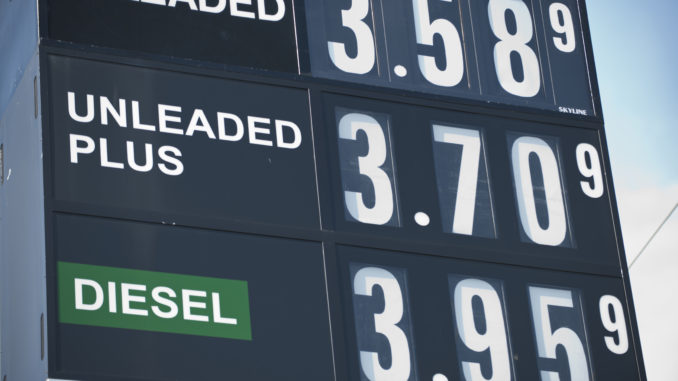
On March 7, 2011 the average price in California for regular gasoline increased 15.5-cents from the previous week. The average statewide price for regular was $3.874.
Following the gasoline margin breakdown for per the California Energy Commission as of March 7, 2011;
| Gasoline Margin Breakdown | Branded | Unbranded | |
| Mar 7 | Mar 7 | ||
| Distribution Costs, Marketing Costs and Profits | $0.13 | $0.06 | |
| Crude Oil Cost | $2.80 | $2.80 | |
| Refinery Cost and Profits | $0.28 | $0.35 | |
| State Underground Storage Tank Fee |
$0.02 | $0.02 | |
| State and Local Sales Tax | $0.11 | $0.11 | |
| State Excise Tax | $0.35 | $0.35 | |
| Federal Excise Tax | $0.18 | $0.18 | |
| Retail prices | $3.87 | $3.87 |
The national average for self-serve regular is at $3.52, up 13.7 cents from the previous week. This is 35.4 cents lower than the price of regular in California.
Why do gasoline prices vary from city to city and sometimes within those cities from block to block? The answer is zone pricing in which distance of the gas stations from refiners or their supplier terminals is a determining factor.
Pump prices are affected by numerous variables that go way beyond the cost of crude oil.
Federal regulations control what pipeline companies can charge to transport fuel from refineries to outlying terminals.
From the pipeline the product goes into large storage tanks, then into a truck, after which it is delivered to the service stations. From there zone pricing takes over, which can either be controlled by the oil companies at their various rack locations or even by the individual location of each gas station.
It comes down to having oil company refiners pricing gasoline on what the market will bare. Branded major oil company station and unbranded station dealers pay different prices as well even though their supplier may be picking up gasoline from the same rack.
The price is posted by the major oil companies at their terminal racks or by the delivered dealer tank wagon (DTW) pricing, which is a little known method of pricing gasoline. However, in some markets it controls the purchase price at 90% for the major oil company gas stations dealers. The DTW gasoline price includes all taxes and delivery fees. Discover more about quality of site maintenance programs, robustness of the use of maintenance procedures and an overall view of the technical risk profile here.
Next are price fluctuations, which changes every day and sometime twice a day, depending on the price of commodities at the New York Mercantile Exchange (Nymex). Local refinery issues and outages at terminals may be brought to bear as well and gasoline is sometimes transported over long distances by oil companies to keep stations from running out of fuel.
Distance from the terminal to the gas station makes a difference in local prices. The unbranded non-contracted type distributor either owns his own delivery trucks or pays a common carrier to deliver the gasoline to his customers. Either way that expense becomes part of the equation in determining the ultimate price he charges the gas station owner and ultimately the consumer.
Station owners need to make a profit margin as well but in the end it comes down to the credit card companies making more money on gasoline than do the retailers.
About The Author – Bob van der Valk is a Petroleum Industry Analyst with over 50 years of experience in the petroleum, gasoline and lubricants industry. He has been often quoted by news media, most recently by Los Angeles Times, and his opinions solicited by government entities, in addition to his daily business of managing large scale supply and marketing operations.
You may contact Bob at email: tridemoil@aol.com and receiver regualr Twitter updates at: bobthegasguy
